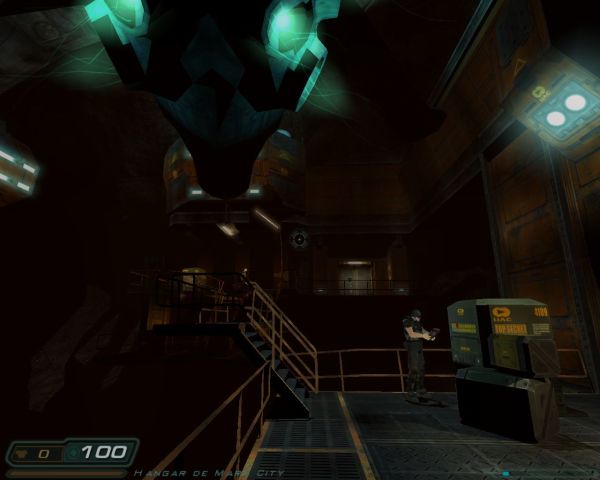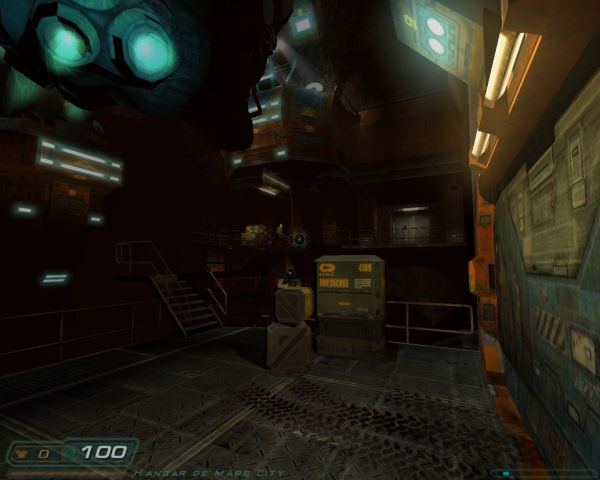
| Summary: |

Benchmarks : From Quake 3 to Doom 3
Although the benchmarks on old graphic cards of which one holds more of the myth that another thing are finally not very useful, we will anyway make a small series of tests without particular pretention. It appeared to us to be a good idea to use 3DMark 2001 SE for the Direct3D mode and Quake 3 Arena for the OpenGL mode, all this in different resolutions and FSAA modes and then end with a Doom 3 test just for fun. Remember that the nVidia drivers are far more mature than the 3dfx ones.
- 3DMark 2001 SE (Direct3D)
We won't present 3DMark 2001 SE, you all know what it is, but we have to discuss some technical considerations prior to launch the tests. To test both cards in the same conditions we have forced the AGP mode to 2x and used software T&L. All the tests that couldn't be run on both cards were not selected (Nature, pixel shaders et bump mapping).
Here are the first results without FSAA for the GeForce 2 Ultra and the Voodoo 5 6000. Like you can see it, the chameleon card is about 25% faster than the 3dfx card in this test. The fill-rate in multi-texturing of about 1Giga-Texel/s that 3dfx used for the advertising is really visible here.
GeForce 2 Ultra / No FSAA
Voodoo 5 6000 / No FSAA
Now let's look at the FSAA 2x results. In this mode both cards are much closer to each other with an advantage of 6% for the GeForce2 Ultra.
GeForce 2 Ultra / FSAA 2x
Voodoo 5 6000 / FSAA 2x
In FSAA 4x mode you first see that the GeForce 2 Ultra is 50% faster than the Voodoo 5 6000, but if you have a closer look at the results you see that the GeForce 2 Ultra has the same result in FSAA 4x and in FSAA 2x. This is of course impossible so there must be a bug in the nVdia drivers or 3DMark 2001 SE. After an analyze of 3DMark's "Quality" test in FSAA 2x and 4x mode we can tell you that there is absolutely no quality difference. This tends to prove that despite the selection of 4x FSAA mode in the nVidia drivers this mode isn't applied under 3DMark 2001 SE.
GeForce 2 Ultra / FSAA 4x
Voodoo 5 6000 / FSAA 4x
Now here are the results in 8x FSAA mode that only the 3dfx card can render, but we see the same problem than before, but with the 3dfx card this time! The FSAA 8x score is the same than the FSAA 4x score. Using the same analyze method we can say that the FSAA 8x mode isn't used.
Voodoo 5 6000 / FSAA 8x
There seems to be a real problem with 3DMark 2001 SE, some scenes that have a bad 3DMark on the 3dfx were as fluid as on the GeForce in reality..someone says optimizations? In short, the scores obtained are more than doubtful, especially as we will see later in a real game like Quake 3 Arena where the FSAA modes are applied correctly.
- Quake 3 Arena (OpenGL)
It's now time for the classic Q3A to measure the performances in OpenGL mode and to see if the strange results obtained under 3DMark are confirmed or not. We will make the benchmarks in the 640x480, 800x600, 1024x764 and 1280x1024 resolutions in all available FSAA modes. These tests have been realised with Q3A version 1.32 and the "four" timedemo. For the 3dfx cards based on the VSA-100 chip we used the OpenGL compatible graphic library "MesaFX" in its 6.2.0.2 version, it's quite similar to the better known 3dfx miniGL. Q3A has been configured with all the graphic options set to the maximum and 32 bit textures.
Let's see the results without FSAA. We can say several things:
- In the lower resolutions the GeForce 2 Ultra is much faster than the 3dfx cards, but this advantage tends to decrease in 1024x768 and higher resolutions. If we had continued to increase the resolution the Voodoo 5 6000 would probably be the fastest card.
- In the 640x480 resolution there isn't much performance difference between the Voodoo 5 5500 and the 6000, this could mean that the CPU is limitating here.
- Starting from the 1024x768 resolution it is fun to see that with the 3dfx cards we can almost apply the "2x more GPU = 2x more performance" equation. It seems that the 3dfx SLI technology works very well and is modular.
Now here are the FSAA 2x results, what can we say about them:
- In this mode there is almost no performance difference between GeForce 2 Ultra and Voodoo 5 6000. The 3dfx should have a better rendering quality because it is using an RGSS rendering, but honestly you can't really see a difference.
- The Voodoo 4 4500 is clearly behind the other cards now and can't even initialize the1280x1024 mode. This was clearly not a gamer card with a maximal resolution of 1024x768 to keep a correct framerate, even in 2000.
- Again we can see the very good sccalability of the VSA-100 architecture.
It was in FSAA 4x mde that we had our first problems under 3DMark 2001 SE but fortunately it isn't the case here. The Voodoo 4 4500 can't do 4x FSAA so it's out of the game. For the rest, the GeForce 2 Ultra beats the Voodoo 5 6000 in every resolution.
The FSAA 8x mode is only available for the Voodoo 5 6000 and as you can see it's almost a pure marketing feature because the framerate is really too low to have a good gaming experience. It's a better idea to use a higher resolution with lower FSAA mode.
The Voodoo 5 6000 has the best results in 2x FSAA mode which is a good compromise between speed and quality. Note that all these OpenGL results are coherent, not like under 3DMark 2001.
- Doom 3
Doom 3 isn't really playable on the Voodoo 5 6000 because its lack of T&L support (remember that it's a 5 years old card), the best that we can do with all options set to the minimum is something like 5-10fps in 640x480 and thus is unplayable. Because we are a bit vicious, we tried to set the maximal quality to see what we could get, at this point we had around 0.5fps ;) Click on the pictures to enlarge them.

